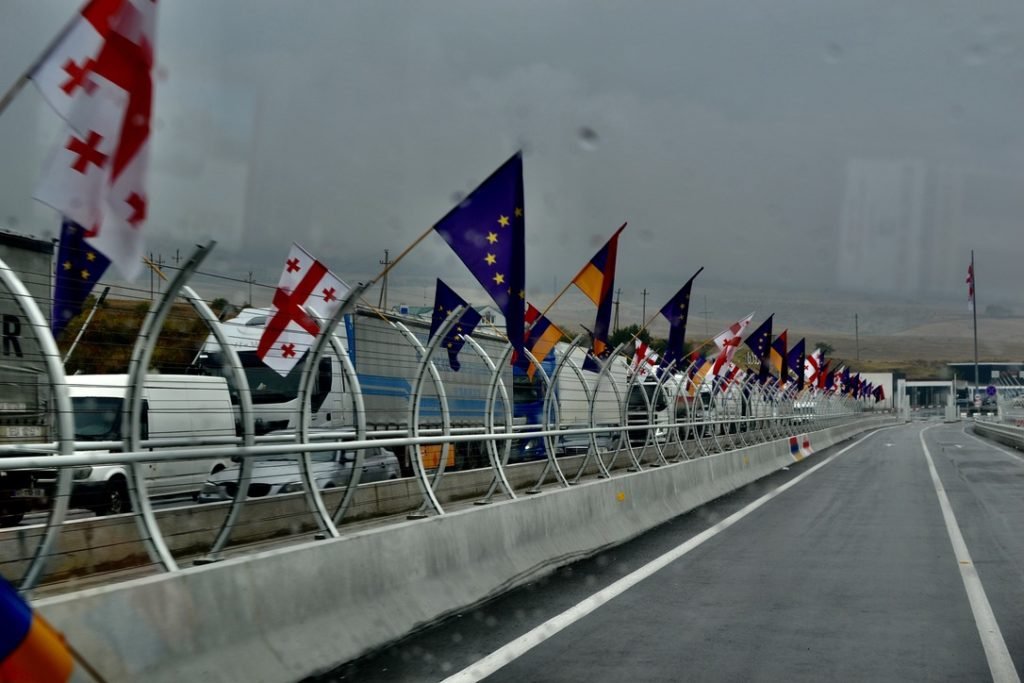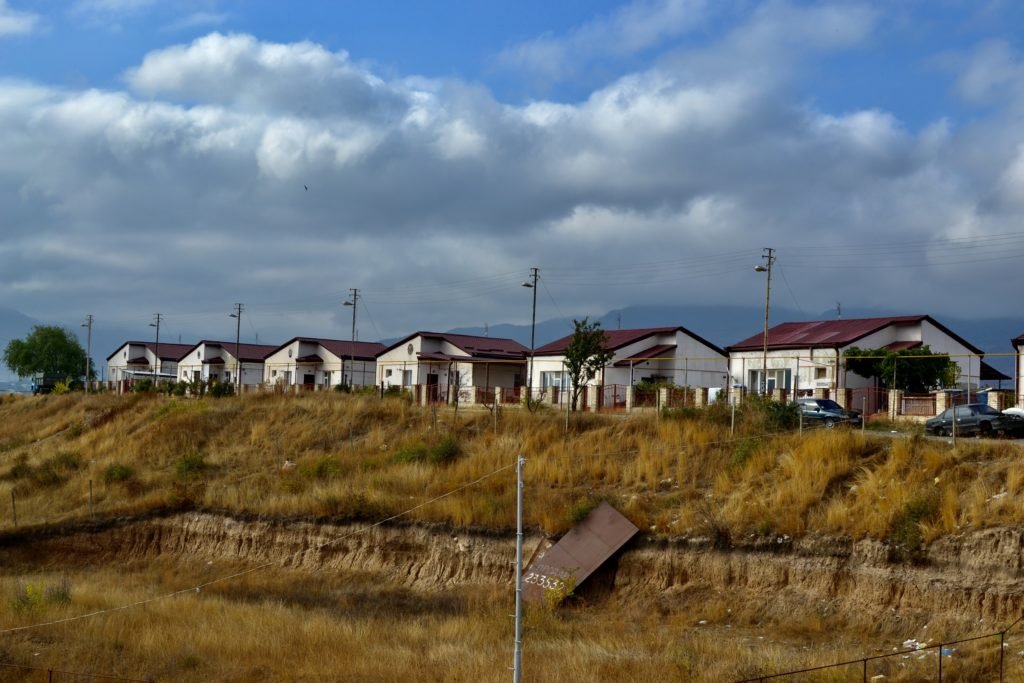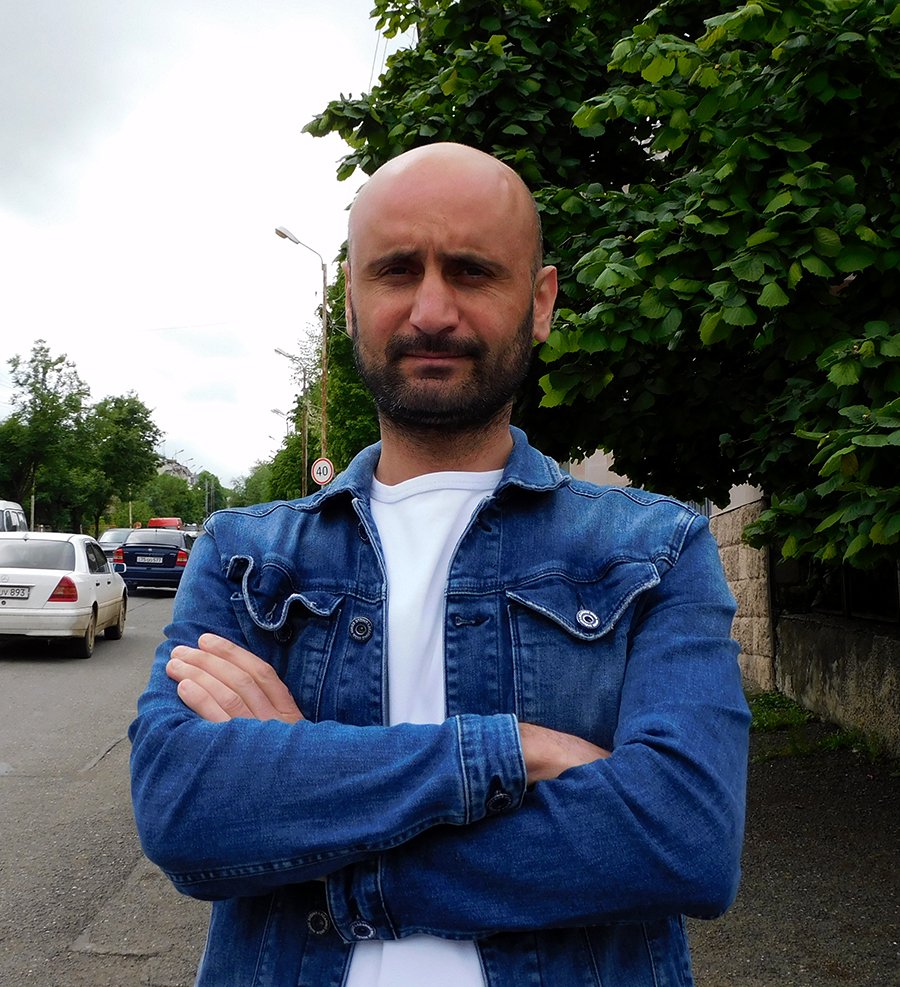
The Center for Media Initiatives (Armenia) organized a visit to Georgia from October 9-15 for journalists with experience in covering conflicts.
Armenian journalists learned about the impact, problems and consequences of the conflict in Georgia. Journalists met their local and international colleagues covering conflicts/clashes, visited local media organizations, met representatives of non-governmental organizations active in the field, representatives of responsible state institutions and citizens affected by conflicts.
After an hour’s drive from the capital Tbilisi, we found ourselves in the settlement of Tserovani, which has become a new place to live for people who left South Ossetia (more than 27-thousand citizens) after the Russo-Georgian war in August 2008. The settlement has around 8,500 inhabitants. Locals say that more than two-thousand houses were built here. Armenians live here as well. “Manukyans live in this home,” said one local who showed us a little white house. They are identical small houses along the street with low ceilings. There is a small shop on the corner and a barber shop at the crossroad in front of which men stand smoking and talking.
“During the post-Soviet 30 years, there were about 500,000 in the Armenian community of Georgia; it is now less than 200,000. It is positive that the community preserves the language and culture; it is positive that especially the young people are active, but it is not enough to play a certain role,” says Arnold Stepanyan, chairman at Public Movement “Multinational Georgia.”

Being in Tserovani, I am immediately reminded of the neighborhood built for displaced people from Baku and Sumgait next to Stepanakert, the capital of Artsakh (Nagorno-Karabakh). The residents point to the same social problems as the displaced Armenians—little support and a promise to provide housing by the government, which very often remains unfulfilled, as in the case of Armenian refugees from Azerbaijan.
Dividing lines
The European Union Monitoring Mission (EUMM) launched in Georgia on October 1, 2008. We can say that it has been very effective in the line of contact between Georgia, Abkhazia and South Ossetia. Since 2008, there have been no clashes or casualties there. Yes, it is true, Armenia and Georgia are in conflict with different countries – Armenia with Azerbaijan, Georgia with Russia, but regardless, if we compare, the difference and result is substantial.
There have been many casualties on the borders of Artsakh and Armenia since the early 1990s ceasefire, then there was a bloody 44-day war in 2020 followed by an escalation in the sovereign territory of the Republic of Armenia, killing at least 207 Armenian soldiers (80 Azerbaijani).
“We are monitoring the line of contact between Georgia and Abkhazia around the clock,” explained EUMM press and public information officer Klaas Maes who met us in Tbilisi. He compared the EUMM to a mother watching over her children to prevent them from fighting.
Recently, the EU gave its final approval to deploy a civilian monitoring mission to Armenia. In a statement, the European Council said it would temporarily send up to 40 monitoring experts from its mission in neighboring Georgia to the Armenia-Azerbaijan border in a step “aimed at facilitating the restoration of peace and security in the area, the building of confidence and the delimitation of the international border.” The Armenia-Azerbaijan border mission will last no longer than two months.
“The European Union is fully committed to contributing to sustainable peace in the South Caucasus,” EU Foreign Minister Josep Borrell tweeted. “We are deploying a 40-person observation capability along the Armenian-Azerbaijani border to build confidence in a volatile situation where human lives are at risk.”
However, the fate of Artsakh (Nagorno-Karabakh) remains uncertain. Two years have passed since the arrival of Russian peacekeepers to the region, but even in this short period of time there have been various well-known incidents. The city of Berdzor (Lachin) was handed over to Azerbaijani control and a new road connects Artsakh to Armenia now.
Artsakh authorities are moving the infrastructure along the new road. The internet cable has been moved, utility poles are being moved, and the issue of the gas pipeline is being discussed.
If you need just one stamp at a checkpoint while entering another country, then you have to cross five or six checkpoints entering Artsakh (these “laws” have been changed many times during the past two years). Currently, foreigners cannot enter at all or only with a “special” permission.

Traveling from Yerevan to Stepanakert, our bus first stops at the passport control of the Artsakh Police. A policeman checks the documents and then wishes us a safe journey. The first checkpoint of Russian peacekeepers is located immediately after it. A Russian soldier in a black mask (not for COVID, but military) enters the bus and asks us to show our passports. The same process is repeated in the next five or six checkpoints. It has been different at different times. If you have taken a video on the road that includes military facilities, the peacekeepers require you to delete it. Then they check to make sure that you have deleted it from the “recently deleted” folder as well.
Artsakh President Harutyunyan believes that Artsakh’s future without Russia’s guarantees is doubtful. “Of course, we are welcoming the international community’s activity, but I would like to say it clearly – Artsakh’s future without Russia is doubtful for me,” he said in an interview with Artsakh Public TV on October 20.
The village of Mets Shen, which replaced Berdzor (Lachin), has been revitalized due to the new road. Additionally, the Russians improved the checkpoints and updated the flags, which seems to hint at who is the “mom” of this “family.”



Be the first to comment